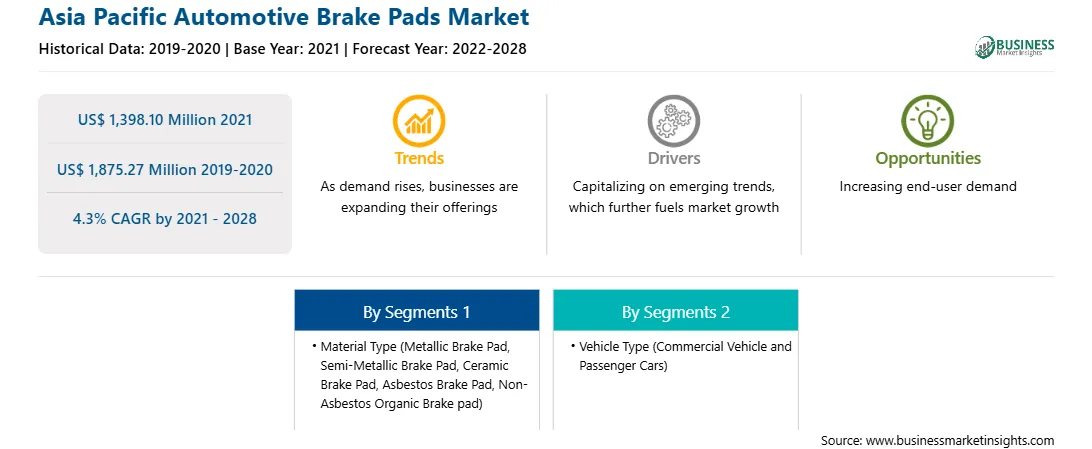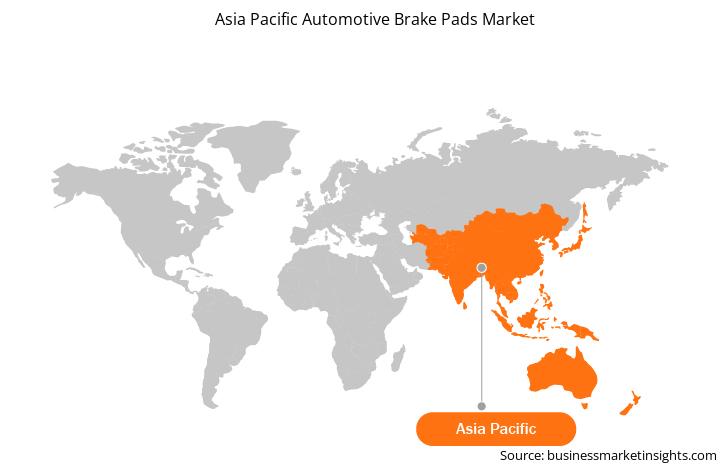The use of automotive brake pads is important to ensure the safety of passengers. Therefore, brake pad materials must be precise and function for long durations. To reduce the weight of the disc rotor, it is necessary to achieve a design with a good balance for achieving an optimum thermal, vibration, and weight balance. Asbestos was the most suitable and widely used brake lining material in the past decade. However, the nature and environment agencies have forcefully banned it. Therefore, the non-asbestos organic type of brake pads was introduced, which is most widely used. However, non-asbestos organic brake pads wear out rapidly and generate lots of wear debris. Thus, a combination of semi-metallic formulation for high performance and non-asbestos organic (NAO) material for lower noise and smoother braking is mostly preferred. There are five basic categories of raw materials used for producing brake pads – abrasives, fillers, lubricants, binders, and reinforcing fibers. The fibers are particularly important because they play a critical role in obtaining consistent braking performance, vibrations & low noise, and limited wear. The continuous efforts to introduce environmentally friendly brake pads have been the primary focus of brake pad manufacturers, further evolving new opportunities for using efficient raw material that is light in weight and environment friendly. Thus, such initiatives are fueling the demand for brake pads across the region.
With the new features and technologies, vendors can attract new customers and expand their footprints in emerging markets. This factor is likely to drive the APAC automotive brake pads market. The APAC automotive brake pads market is expected to grow at a good CAGR during the forecast period.
Strategic insights for the Asia Pacific Automotive Brake Pads provides data-driven analysis of the industry landscape, including current trends, key players, and regional nuances. These insights offer actionable recommendations, enabling readers to differentiate themselves from competitors by identifying untapped segments or developing unique value propositions. Leveraging data analytics, these insights help industry players anticipate the market shifts, whether investors, manufacturers, or other stakeholders. A future-oriented perspective is essential, helping stakeholders anticipate market shifts and position themselves for long-term success in this dynamic region. Ultimately, effective strategic insights empower readers to make informed decisions that drive profitability and achieve their business objectives within the market.

| Report Attribute | Details |
|---|---|
| Market size in 2021 | US$ 1,398.10 Million |
| Market Size by 2028 | US$ 1,875.27 Million |
| Global CAGR (2021 - 2028) | 4.3% |
| Historical Data | 2019-2020 |
| Forecast period | 2022-2028 |
| Segments Covered |
By Material Type
|
| Regions and Countries Covered | Asia-Pacific
|
| Market leaders and key company profiles |
The geographic scope of the Asia Pacific Automotive Brake Pads refers to the specific areas in which a business operates and competes. Understanding local distinctions, such as diverse consumer preferences (e.g., demand for specific plug types or battery backup durations), varying economic conditions, and regulatory environments, is crucial for tailoring strategies to specific markets. Businesses can expand their reach by identifying underserved areas or adapting their offerings to meet local demands. A clear market focus allows for more effective resource allocation, targeted marketing campaigns, and better positioning against local competitors, ultimately driving growth in those targeted areas.

APAC Automotive Brake Pad Market Segmentation
The APAC automotive brake pad market is analyzed based on material type, vehicle type, and country. Based on material type, the market is segmented into metallic brake pads, semi-metallic brake pads, ceramic brake pads, asbestos brake pads, and non-asbestos organic brake pads. The non-asbestos organic brake pads segment dominated the market in 2020, and the semi-metallic brake pads segment is expected to be the fastest-growing segment during the forecast period. Based on vehicle type, the market is segmented into commercial car and passenger car. The passenger vehicles segment dominated the market in 2020 and is expected to grow faster during the forecast period. Based on country, the APAC automotive brake pad market is segmented into China, Japan, India, South Korea, Australia, and the Rest of APAC. ACDelco; AKEBONO BRAKE INDUSTRY CO., LTD.; Brake Parts Inc. LLC.; Brembo S.p.A.; Hebei Huahua Friction Material CO., Ltd.; Nisshinbo Holdings Inc.; Robert Bosch GmbH; SANGSIN BRAKE; Util Industries S.p.A; and ZF Friedrichshafen AG are among the leading companies in the APAC automotive brake pad market.
The Asia Pacific Automotive Brake Pads Market is valued at US$ 1,398.10 Million in 2021, it is projected to reach US$ 1,875.27 Million by 2028.
As per our report Asia Pacific Automotive Brake Pads Market, the market size is valued at US$ 1,398.10 Million in 2021, projecting it to reach US$ 1,875.27 Million by 2028. This translates to a CAGR of approximately 4.3% during the forecast period.
The Asia Pacific Automotive Brake Pads Market report typically cover these key segments-
The historic period, base year, and forecast period can vary slightly depending on the specific market research report. However, for the Asia Pacific Automotive Brake Pads Market report:
The Asia Pacific Automotive Brake Pads Market is populated by several key players, each contributing to its growth and innovation. Some of the major players include:
The Asia Pacific Automotive Brake Pads Market report is valuable for diverse stakeholders, including:
Essentially, anyone involved in or considering involvement in the Asia Pacific Automotive Brake Pads Market value chain can benefit from the information contained in a comprehensive market report.